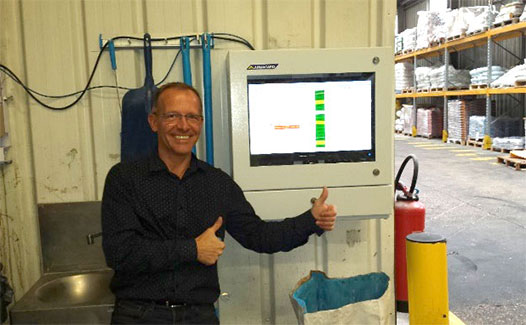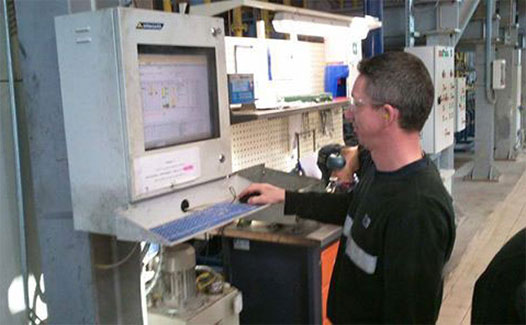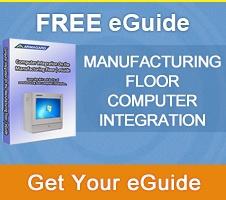
Too many manufacturing floors are hit and miss when it comes to reliability because firms are trying the same things expecting different results in an attempt to improve manufacturing productivity. Here are five things to cut out on the manufacturing floor that will improve performance…
Manufacturing floors are fraught with reliability issues. Machinery and personnel can be two key factors contributing to an unreliable manufacturing floor. However, what’s often overlooked is the role that the surrounding environment has on reducing manufacturing floor performance.
Many manufacturing floors that exist in the modern era came into existence at a time when little care was given to the impact of the surrounding environment on the manufacturing process. Manufacturing floors of yesteryear are synonymous with filth, grime, heat and humidity, it’s true of many manufacturing plants today.
While some plants have cleaned up their act, meaning their less synonymous with dust, dirt and gruelling heat, the clean-up hasn’t prevented the same challenges facing the manufacturing floor, meaning the surrounding environment still plays its part in bringing manufacturing plants to a grinding halt.
How? It has everything to do with the increasing use of computers on the manufacturing floor. It’s safe to say that there are more manufacturing floors using computers as part of their processes than those not using them. Computers have become an integral part of manufacturing life.
Across today’s manufacturing floors, the problems of yesteryear have simply evolved. No longer is dirt, grime, heat or humidity taking down a well-oiled machine, they’ve become the nemesis of the modern computer.
How do you tackle the new nemeses to the manufacturing floor? Let’s explore…
5 key things to cut to improve manufacturing productivity

Unprotected manufacturing floor computers are a common cause of downtime.
Poor reliability on the manufacturing floor is usually the result of a technology malfunction. The problem is becoming increasingly associated with computers. Why? Manufacturing plants are bringing ‘office’ computers to the shop floor.
That’s great because it beats the old way of stashing them in some makeshift office. Instead, computers are at the heart of the manufacturing floor, contributing to the streamlining of the manufacturing process.
However, problems occur pretty quickly because those computers are not built to endure the rigours of a gruelling manufacturing floor. That’s bad. Before you know it, entire manufacturing floors are left idle by failing computers, but the problems are very preventable.
It’s all a matter of protection and here are the five keys to improve manufacturing productivity for a killer manufacturing process…

Computers enclosures used in Doha airport, India.
1. Cut dust out of the equation – Dust is as inevitable as taxes. To the naked eye, you could have the cleanest manufacturing floor in the world, but dig deeper – especially around your computers – dust is silently doing damage to those workplace computers you depend on.While dust doesn’t do immediate damage, a gradual build-up can cause untold internal destruction to computers. It’s not unknown for high volumes of dust to ignite a fire. All it takes is one computer left on overnight and you could show up for work the next day greeted by ashes.
That’s a worst case scenario. Realistically speaking, dust can result in a whole heap of problems, particularly extended periods of downtime. Ultimately that leads to lost time, profit loss and reputational damage.
Let’s face it, no manufacturing floor would think to check the internal components of a computer they rely on, which rules out any thought of cleaning it. Therefore, prevention is the best cure.
2. Cut heat out of the equation – Running an ‘office’ computer all day, every day in an unorthodox environment – like a manufacturing floor – will take its toll. Computers need to ‘breathe’ and equally they need to be kept cool.
A computer’s internal fans can only do so much to dispel heat until they give out, rendering it useless and bringing manufacturing productivity to a standstill.
3. Cut liquids out of the equation – Some, not all manufacturing floors use liquids on a day-to-day basis, whether it’s water for clean down processes or paint used by paint sprayers. The fact is, liquids and electronics don’t mix.
More important than preventing downtime is the health and safety issues posed by the use of unprotected computers in close proximity to liquids.
If an accident were to occur because computer health and safety was neglected, you can forget wanting to improve manufacturing productivity, you’ll probably have a lawsuit on your hands.
4. Cut cold out of the equation – Just like excessive heat, the cold has a severe effect on computer components and some sectors of manufacturing have cold storage facilities on site. Yes, some manufacturing and industrial firms have been known to use computers in such cold-zones.
This just emphasises how dependent the modern manufacturing floor has become on standard office computers for various uses.
5. The crucial key – introduce computer enclosures – The master key - that will ultimately improve manufacturing productivity across your plant – is to introduce computer enclosures into the mix.
They’re built to ensure the survival of ‘office’ computers used on the manufacturing floor. Essentially, all the keys for creating a killer manufacturing process when it comes to computers are unlocked by enclosures.
They’re designed to prevent dust, heat, liquids and the cold from becoming a problem for computers in the first place. Plus, they’re incredibly flexible and suit the modern manufacturing floor.
As most manufacturing floors began their existence without computer protection in mind, installing specialist computer kit can be extremely disruptive because you would have to strip out your current computer system to make way for the new one. You’d have to train staff to use the system, plus specialist kit is way more expensive.
Then there’s the issue of relying on the manufacturer of specialist computer kit if things do go wrong. You’ll find yourself tied into costly maintenance contracts and you’ll face delays if engineers can’t come out to repair or replace a faulty system.
Enclosures on the other hand give you the option to keep your current computer system, which saves you time, saves you money and avoids the need to train staff. Additionally, you’re not tied into any contracts, you can replace or upgrade equipment at your convenience.
Computer enclosures come highly recommended because they add value to the manufacturing floor, solving common pain points experienced by the modern manufacturing plant. They work to improve manufacturing productivity by cutting computer related problems.
To give your manufacturing floor the computer protection it needs, familiarize yourself with productivity improving computer enclosures.
As you go on your way, download the top tips guide for continuous manufacturing productivity improvements.



